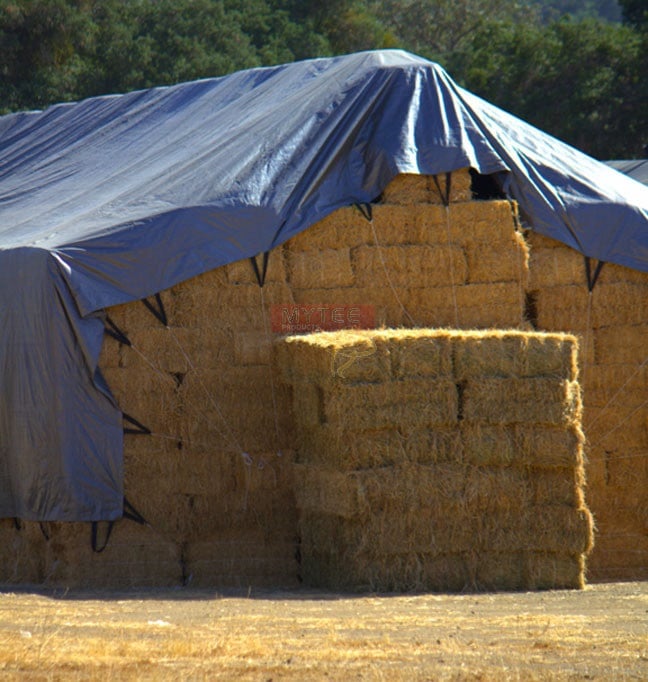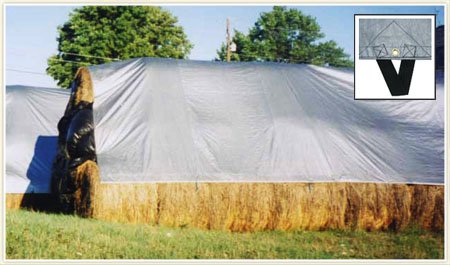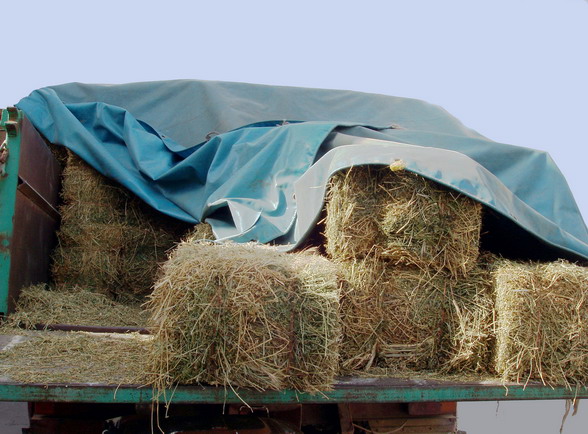Mytee Products proudly carries heavy-duty hay tarps used by farmers all over the country to protect their crops. The hay tarps we stock, are made with heavy-duty polyethylene, UV treated and with reinforced seams. Our tarps are manufactured with a silver outside to reflect sunlight and a black underside to absorb heat. That being said, it is important to understand the importance of using hay tarps.
For those outside the agricultural industry, Hay may not seem to be of much importance. However, in the industry, it is an incredibly valuable crop. It is also exceptionally costly to grow and harvest as compared to other crops such as corn, wheat, barley, etc. The slightest physical loss can add up to a significant financial loss for the farmer harvesting it.
According to Farm and Dairy, a farmer growing alfalfa hay at 4 tons per acre will spend roughly $133 per ton on growing and harvesting. The cost of 3 tons per acre is just over $112. By comparison, the USDA’s numbers for the week of May 22, 2015 show that the average price of alfalfa in north-central California was just over $242 per ton. It is clear to see that the cost of production is nearly half the average sale price – this does not include the associated costs of transport and farm administration. The numbers also make it clear that the slightest of losses can be of great significance to an alfalfa hay farmer.
Protecting Hay from Weather
Hay is immediately vulnerable to the weather and other environmental conditions as soon as it is harvested. Its number one enemy is moisture. Because hay is a natural product, it is exposed to all sorts of bacteria before and after harvest. Nevertheless, excessive moisture within the hay after harvest provides the perfect environment for bacteria to multiply. Hay tarps are used to control moisture levels by protecting the crop from rain.
Farm and Dairy says that normal losses for hay stored in a shed or barn are in the 4% to 7% range. Losses can be as high as 25% for hay that is stacked on the ground and left uncovered. Considering that the cost of production eats up nearly 50% of the sale price, losing 25% means a substantial loss in profits. No wonder farmers purchase hay tarps as they do. Investing in a supply of tarps is a lot cheaper than suffering a 25% loss of your crop.
Above and Beneath
Experienced farmers know that hay has to be protected from both above and beneath. Hay tarps are used to cover a stack and protect the sides, but what about where the stack meets the ground? According to Farm and Dairy, moisture from the ground can be just as destructive. They urge farmers to either stack hay on a concrete base or, in the absence of a slab, on top of a geotextile fabric that minimizes moisture.
When stacking rolled bales of hay end-to-end, the flat ends should be in contact with one another. This prevents exposure that could cause damage to the first few inches of each end of the bale. Rectangular bales stored side-by-side should be spaced so that their sides to not come in contact. Lastly, if stacking bales on top of one another as the chosen storage method, they should be stacked in a pyramid to make covering with hay tarps more effective.
Investing in hay tarps is the next best storage method for farmers not interested in building a barn or shed. Hay tarps provide the protection necessary for reducing loss while making it possible to use storage space for other purposes once the hay supply is depleted. We urge you to contact Mytee Products for more information about our hay tarps and our competitive pricing. Investing in hay tarps will not only cost less than significant product loss but will protect and maximize the profit of hay bales.
Sources:
1.Farm and Dairy – http://www.farmanddairy.com/top-stories/how-much-hay-are-you-losing-in-storage/260050.html
2.USDA – http://www.ams.usda.gov/mnreports/lswfeedseed.pdf












